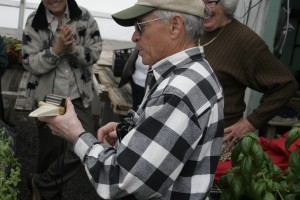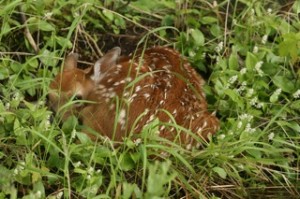Industrious loons adding to nests to combat rising waters
The swamps are full, the streams are full, and the bog is full of water too. I have to apologize to those who showed up for my Ferd’s Bog hike on Friday, June 14 as I was a no show. I was there on Saturday, June 15 and wondered why there were no people for the hike.
The summer gets a little hectic and I will have to check my calendar more closely next time.
Two of the folks who were on the hike on Friday also came to the Remsen Bog hike today. They said they had a good time even without the guide on Friday.
Today marked the 20th year I have led the Father’s Day hike to Remsen Bog to view the showy lady slippers.
I had gone by the bog with the Old Forge Garden Club on Tuesday in the pouring rain and there wasn’t much showing then.
The orchids have never failed me in all those years as a few were out this morning. There were a lot more in bud and several that weren’t more than six inches tall.
If you do visit the bog to photograph the orchids be careful where you step so you don’t crush any of the smaller plants.
The Garden Club members had taken a trip to Snyder’s Green-house on Route 5 in Vernon earlier in the day on Tuesday.
Glenn Snyder surely has a green thumb and the remaining plants he had were beautiful. It rained nearly the whole time he was telling us about his operation and how he grows all his plants from seed.
He showed us his seed planter that had an old electric razor hooked to the handle that vibrates the seeds one at a time into the pots.
This gadget is now used by his grandson to do the job. He raises vegetables as well as all kinds of flowers to sell.
He told us about watering and fertilizing our flowers and vegetables so they would produce more blooms and vegetables. He raised several deer resistant plants that can be planted in this area, such as cleome, dianthus and marigolds.
They really smelled and some didn’t need deadheading. He has been operating his greenhouse for 42 years and he had advice and answers for our gardeners’ many questions.
On the way back we went to the Turning Stone for lunch and to view the gardens. Their inside gardens were done very nicely but we never did view the outside flowers as it was pouring rain by the time we finished lunch.
We may have to go back on a sunny day to see those outside gardens.
From the looks of what I saw growing in the gardens around the parking lots, they sure don’t have much of a deer problem.
I’m sure some loon nests went under during our recent rain downpours that raised the water level in many of the lakes as much as a foot.
I saw where the loons on Sixth Lake successfully added about six inches of new nesting material to their nest above the rising water.
Two chicks hatched on June 11 from a floating platform on a local lake. This is the earliest hatching of loon chicks I’ve ever recorded.
Many turkey chicks are out and about so if you see them crossing the highway please give them some time to cross.
There are also many newborn baby fawns traveling around with their moms. If you see a doe crossing the road just watch to see if she has a young one following behind and give them some space.
A summary of the Great Backyard Bird Count (GBBC) held in February is out. Observations were made from 111 countries, on more than 134,000 check lists. Even more amazing is that bird watchers reported 4,000 different species, which is 39 percent of all species in the world!
Top species reported for the entire count were Northern Cardinal, Dark-eyed Junco, and Mourning Dove, reflecting the high participation in the United States and Canada, where the GBBC has been established for more than a decade.
Many locals say they have never seen a bluebird, but that’s another story. See ya.


